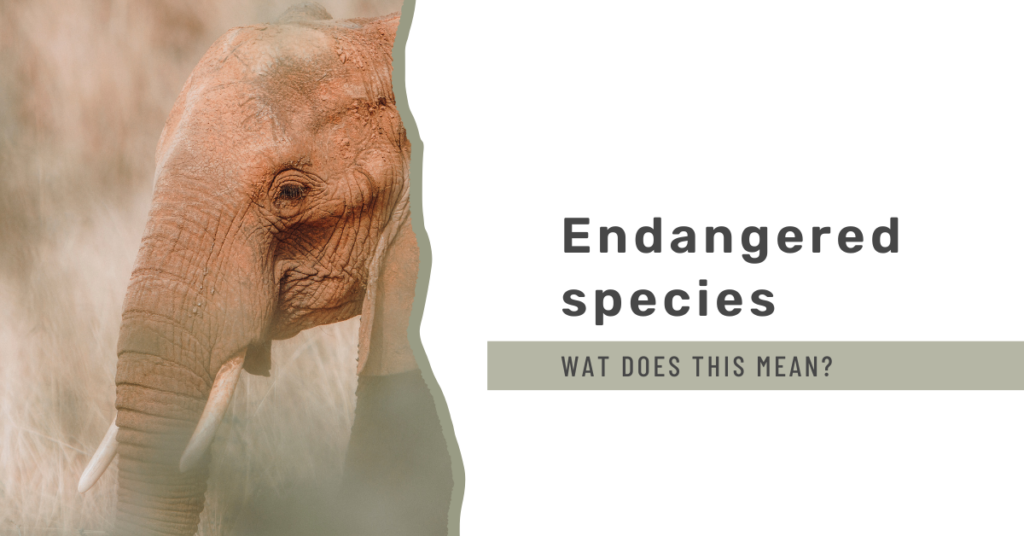Madagascar holds a special place in my heart as it’s where my fascination with the natural world truly began. This unique island is home to an incredible array of animal and plant species. Many of which can’t be found anywhere else on the planet. In fact, approximately 89% of its plant species, 95% of its reptiles, and 92% of its mammals are endemic to Madagascar. Among these remarkable creatures, the group of lemurs (Lemuroidea) stands out as one of the most iconic and beloved.
Situated about 400 kilometres off the coast of East Africa. Madagascar is the fourth-largest island globally, covering over 500,000 square kilometres. However, it’s essential to note that Madagascar hasn’t always been an island; its origins trace back to the supercontinent Gondwana. As Gondwana began to break apart, Madagascar remained connected to the Indian subcontinent until approximately 88 million years ago. From that point on, it became an isolated and distinct island in the vast Indian Ocean.




The island Madagascar
Madagascar’s isolated location played a pivotal role in allowing its native flora and fauna to evolve into species found nowhere else on the planet. However, it’s interesting to note that this isolation doesn’t apply to lemurs. They arrived on the island after it had become isolated. Lemurs are believed to have evolved from mainland African primates. Indicating that their ancestors made the incredible journey across the Mozambique Channel—a deep channel that separates Africa from Madagascar. Yes, they crossed the open ocean!
The most widely accepted theory regarding how the lemur ancestors reached Madagascar is through rafting. It’s believed that very small populations of these primates rafted on tangled mats of vegetation. Crossing the Mozambique Channel from nearby Africa. The exact number of these rafting events remains unknown. But what we do know is that all 108 species of lemurs trace their origins back to the common ancestors that arrived in Madagascar through this remarkable journey.
The unique lemurs
The lemurs of Madagascar, a captivating group of primates, are organized into five distinct families. Each contributes to the island’s rich tapestry of lemur diversity. In the Daubentoniidae family, you’ll find the unique aye-aye, renowned for its distinctive physical characteristics, such as long fingers with a particularly thin middle finger and rodent-like teeth. These adaptations make it well-suited for its nocturnal lifestyle. Remarkably, there used to be a second member of this family, but it became extinct within the last 1000 years.
Moving to the Lepilemuridae family, this group is home to the sportive lemurs. These lemurs are known for their agile and sportive nature, allowing them to navigate the forest canopies with ease. In the Indriidae family, you’ll discover some of the most iconic lemurs. Including the indri, known for its haunting calls, sifakas recognized for their unique method of leaping between trees, and woolly lemurs, covered in dense fur to stay warm in the forest’s cooler regions.
The Cheirogaladeidae family encompasses the mouse lemurs, dwarf lemurs, and fork-marked lemurs. Showcasing a range of sizes and behaviours, from the tiny mouse lemurs to the larger and more robust dwarf lemurs. Finally, the Lemuridae family is the largest and most diverse. Housing a wide array of lemurs, with 19 to 41 different species. Some well-known lemurs within this family include ring-tailed lemurs, brown lemurs, and black-and-white ruffed lemurs.
Madagascar’s lemurs, with their incredible diversity and unique adaptations, serve as a testament to the island’s remarkable evolutionary history. Exploring their world not only offers a glimpse into the wonders of nature. But also underscores the critical importance of preserving this extraordinary biodiversity for generations to come.




How do lemurs coexist in such large numbers?
Lemurs, due to the absence of other mammals in Madagascar, have impressively adapted to occupy various niches within a range of habitats. These niches, typically filled by creatures like monkeys, squirrels, woodpeckers, or ungulates in other ecosystems, have been diversified by lemurs to cater to their specific ecological needs. This specific habitat selection is primarily aimed at reducing competition among different lemur species, ensuring their coexistence.
One of the most common forms of specialization among lemurs is their dietary preferences. However, they also exhibit subtle differences in substrate choices. The forest strata they inhabit, their activity cycles, and their social organization. These variations in behaviour and preferences allow multiple lemur species to thrive in the same environment without directly competing for resources.
Despite their ability to adapt to ecological niches, lemurs, especially the smaller species, face the constant threat of predation. Interestingly, not all predators are typical of natural ecosystems. For diurnal lemurs, humans pose the most significant threat, along with their domestic cats and dogs. Although certain taboos in Madagascar discourage the consumption of specific lemurs, human activities still endanger their populations. Other natural predators include the fossa, snakes, diurnal birds of prey, and crocodiles, all contributing to the complex web of interactions in Madagascar’s unique ecosystems.
Other endemic species
Madagascar’s ecological distinctiveness and biological diversity make it a captivating subject for scientists and nature enthusiasts alike. This island nation’s isolation for millions of years has fostered the evolution of countless endemic species. Rendering it a living testament to the forces of natural selection and adaptation. Beyond lemurs and chameleons, Madagascar boasts a wealth of unique flora and fauna.
In its lush rainforests, you can encounter extraordinary creatures like the fossa, a top predator that resembles a blend of a cat and a mongoose. Madagascar’s birdlife is equally intriguing, with species like the aye-aye lemur, known for its distinctive tapping foraging technique. The island’s rivers and lakes are inhabited by peculiar aquatic life forms. Including the Madagascarophis colubrinus, a non-venomous snake that’s perfectly adapted to life in the water.
Additionally, Madagascar’s diverse landscapes range from the spiny forests of the south, home to the bizarre-looking radiated tortoise, to the otherworldly limestone formations of Tsingy de Bemaraha. These ecosystems offer habitat to an array of unique plant species. Such as the otherworldly baobabs and the carnivorous Nepenthes madagascariensis, a pitcher plant found nowhere else.
Madagascar’s ecological significance stretches beyond its borders, contributing to our understanding of the planet’s natural history. It serves as a reminder of the importance of conservation efforts. As many of its remarkable inhabitants face the threats of habitat loss and climate change. Preserving Madagascar’s biological treasures is not just an act of safeguarding a unique ecosystem. It’s a commitment to preserving the mysteries of evolution and the wonders of nature for generations to come.




Human influence
Human history in Madagascar is relatively brief compared to the island’s ancient natural history. Roughly 1,500 to 2,000 years ago, the arrival of humans marked the beginning of a complex cultural and environmental relationship. These settlers, originating from India, Southeast Asia, and Africa, each brought their unique contributions to the evolving Malagasy culture.
However, this relatively short period of human presence has had a profound impact on Madagascar’s ecology. The island has become one of the world’s most imperilled ecosystems, facing a multitude of environmental challenges. Among these, deforestation and habitat destruction are perhaps the most pressing. As forests are cleared for agriculture, the natural habitats of lemurs and other unique species are increasingly threatened.
Agricultural practices, particularly the use of fire, have further exacerbated the issue. Erosion and soil degradation have become pervasive problems, affecting both the island’s natural landscapes and the livelihoods of its people. Overexploitation of resources, from timber to wildlife, adds to the ecological strain. Additionally, the introduction of alien species, often unintentionally, has disrupted native ecosystems and threatened native species.
Madagascar’s remarkable biodiversity, which developed over millions of years in isolation, is now under immense pressure. Balancing the needs of its human population with the imperative to protect its unique natural heritage is an ongoing challenge. Conservation efforts are crucial to addressing these complex issues and ensuring a sustainable future for both the people and wildlife of Madagascar.
Deforestation
One of the most prevalent methods of converting natural vegetation in Madagascar into rice fields is the practice known as “slash and burn,” locally referred to as ‘Tavy’ in Malagasy. Typically, this method involves clearing and burning a forested area spanning 0.5 to 1 hectare to prepare it for agricultural purposes. The initial reproductive cycle for rice cultivation lasts 2 years, after which the land must lie fallow for about 4 to 6 years before another cycle can commence. However, the soil’s fertility can only support 2 or 3 of these reproduction cycles before its nutrients are depleted. Unfortunately, due to the complex ecology of the rainforest, the land rarely recovers to its original state, often becoming dominated by shrub vegetation or invasive alien grasses.
In addition to slash-and-burn agriculture, logging for timber poses a significant threat, particularly in the eastern rainforests of Madagascar where tropical rainforests thrive. The high value of Malagasy hardwoods has driven illegal logging, even within protected areas. While timber extraction itself may not directly cause deforestation, it degrades forests and increases the likelihood of future clearing for subsistence agriculture or other uses. This cumulative impact poses a considerable challenge to Madagascar’s unique ecosystems and biodiversity.




Erosion
The dramatic erosion of Madagascar’s famous red soil is a striking environmental issue that has garnered attention even from astronauts observing from space. These rivers, tinged blood-red by eroded soil, ultimately flow into the Indian Ocean, creating a vivid and unsettling visual spectacle. This extensive and relentless erosion problem is closely tied to deforestation, which strips the land of its protective forest cover.
Healthy forests play a crucial role in preventing soil erosion by anchoring the soil with their intricate root networks. In their absence, the soil becomes vulnerable to erosion. In some regions of Madagascar, erosion rates reach staggering levels, with as much as 400 tons of soil eroding per hectare annually. This alarming rate of soil loss not only threatens the island’s unique ecosystems and biodiversity but also impacts local communities and agriculture. Addressing this issue is essential for the long-term sustainability of both Madagascar’s environment and its people.
Overexploitation
Madagascar’s native wildlife faces severe threats from hunting and unsustainable harvesting practices, driven primarily by the need for local communities to provide for their families. Despite laws in place since 1964 that prohibit the killing or keeping of lemurs as pets, these charismatic primates are still hunted on a significant scale. This hunting extends beyond lemurs to include other species like tenrecs and carnivores, all sought after for their protein.
Additionally, reptiles and amphibians, including chameleons, geckos, snakes, and tortoises, are often captured from their natural habitats for the international pet trade. This practice not only disrupts local ecosystems but also poses a significant threat to these vulnerable species.
The waters surrounding Madagascar, rich in fish, play a crucial role in supporting local communities’ livelihoods. However, fishing in these waters is inadequately regulated, with foreign fishing boats exploiting the resources on a large scale. These unsustainable fishing practices not only threaten the ocean’s delicate balance but also leave very little behind for local fishermen. Moreover, large-scale harvesting affects various marine species, including sharks, sea cucumbers, and lobsters, further exacerbating the challenges faced by Madagascar’s unique ecosystems. Efforts to address these issues require sustainable management and regulation to safeguard both the environment and the livelihoods of local communities.




Alien species
The introduction of alien species has had devastating consequences for Madagascar’s unique and endemic wildlife. One of the most striking examples of this ecological disruption can be observed in the country’s rivers and lakes. The adaptable and aggressive tilapia, initially introduced as a food fish, has outcompeted and displaced the native cichlids. This intrusion of alien species has disrupted the delicate balance of these aquatic ecosystems, threatening the survival of native species that have evolved over millennia in isolation. The ongoing challenges posed by invasive species underscore the importance of comprehensive conservation efforts to protect Madagascar’s biodiversity and restore its natural habitats.
How this affects the lemurs of Madagascar
The environmental challenges facing Madagascar have had a profound impact on its iconic lemurs, affecting them on multiple fronts. Not only are lemurs hunted, but their very habitat has experienced dramatic and ongoing declines. This distressing trend is reflected in the conservation status of these unique primates. Presently, a staggering 98% of lemur species are under the threat of extinction, with a dire 31% classified as critically endangered—hovering on the brink of extinction.
Tragically, help has arrived too late for at least 17 lemur species, which have succumbed to the significant human pressures on the island. These extinctions can largely be attributed to the loss of suitable habitat, exacerbated by the larger size of these now-vanished species compared to their surviving counterparts in Madagascar. The plight of lemurs underscores the urgent need for conservation initiatives to preserve both these captivating primates and the extraordinary biodiversity of Madagascar.
Efforts to conserve lemurs and their habitats involve a combination of strategies, including reforestation, protected areas management, and community-based conservation initiatives. However, these challenges are not unique to lemurs; they represent a global conservation crisis. The fate of the lemurs of Madagascar is a stark reminder of the urgent need for international cooperation and concerted efforts to protect our planet’s precious biodiversity.
Want to support my work?
I spend a lot of time keeping this website filled with educational content and keeping updates about what I do to achieve my dream of working and living in Africa. Do you want to support me? You can buy me a coffee or purchase one of my digital prints. All proceeds will go towards my elephant research and the time spent on this website.







